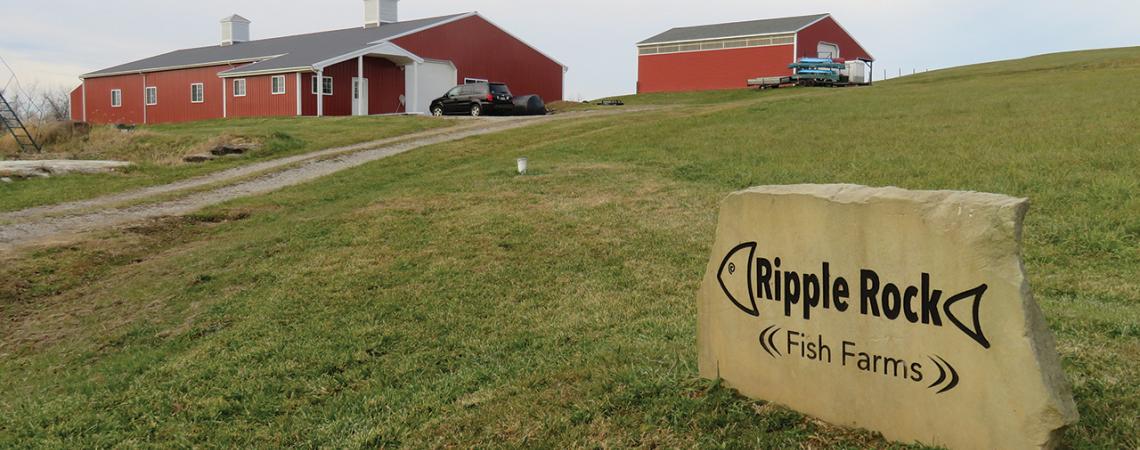Traci Bell and her husband, Craig, moved from Los Angeles to Muskingum County, where they decided to raise fish. (Photo by Damaine Vonada)
Along a narrow road that snakes through the woodsy hills north of Zanesville, Ripple Rock Farms sits on 15 country acres where Guernsey-Muskingum Electric Cooperative members Craig and Traci Bell have lived for several years.
That bucolic setting is poles apart from the bustling Los Angeles area where Craig, an engineer, and Traci, a CPA, grew up. “We’re like Oliver and Lisa on Green Acres,” jokes Traci, referring to the 1960s-era sitcom about fish-out-of-water urbanites who move to a farm in the country.
That comparison is apt — and a bit ironic — because the “crops” they raise at Ripple Rock actually are fish.
The Bells purchased the property because Craig had traveled frequently for his college facilities management job, and, besides offering the rural lifestyle they wanted, it was convenient to his campus accounts. As his travels increasingly infringed on family time, the Bells, who are the parents of four children, determined that an aquaculture business could allow Craig to leave the corporate world and work at home.
The local foods movement, coupled with a growing demand for seafood, has made aquaculture — growing fish under controlled conditions in tanks or ponds — one of the fastest-growing segments of U.S. agriculture. “People are more health-conscious and like to know where their food is coming from,” Traci says.
While taking a Cornell University aquaculture course, the couple discovered research that suggested a recirculating system would be a cost-effective way for small farmers to get into the business. Craig and Traci took on the challenge of proving that the idea was workable and more affordable than the pricey fiberglass tanks conventionally used in aquaculture. After initially experimenting with goldfish in their garage, they received a USDA grant in 2013 to construct and test a recirculating system.
Today, the Bells are full-time fish farmers who raise some 20,000 tilapia annually inside a 6,000-square-foot building with four recirculating raceways, plus tanks for fry and fingerlings.
Made of treated lumber and rubber liners, each raceway holds 11,000 gallons of water and basically works like a swimming pool, draining and recycling the water and filtering out waste every 30 minutes. “We use ordinary PVC pipe to carry the water,” says Craig. “Most of the parts are available at any hardware store.”
Along with reduced startup costs, the system also is sustainable. “It only uses 1 percent of the water that would be required to raise the same number of fish in an outdoor pond,” Traci says. The Bells keep the water’s temperature between 75 and 80 degrees, and baking soda for adjusting its pH is the only additive. “Our goal is providing a clean, healthy seafood option that people feel confident about eating,” Traci says.
Tilapia do well in an aquaculture environment, and the fish has a mild taste that Traci describes as “the chicken version of seafood.” After obtaining 1-inch fry from a certified breeder, they use soybean-based feed to raise the tilapia to a market weight around 20 to 24 ounces. Most are wholesaled live to specialty grocery stores in Columbus and Cleveland, but because bottom-feeding tilapia retard algae growth without chemicals, Ripple Rock’s customers also include pond owners and golf courses.
The farm produces about 30,000 pounds of fish annually, and the Bells expect to reach 50,000 pounds within the next two years. Meanwhile, they give tours of Ripple Rock’s facilities and offer instructional materials aimed at teaching more people how to create and operate a recirculating system. They want to foster aquaculture in the Midwest, and besides, says Traci, “We have fun sharing our operation with others.”









